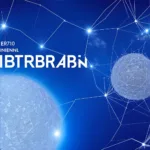
The Ethereum network, U.S. Treasury yields, and digital assets have recently been under the spotlight as the staking rate of ether experiences a decline. This drop to 3.7% annualized, compared to 8% in June, is attributed to the rising U.S. Treasury yields and the rewards being spread across more validators due to fewer network transaction fees. However, it’s essential to understand that comparing the staking yields of ether to U.S. fixed income yields is not a fair comparison.
Why comparing staking yields and fixed income yields isn’t fair
Treasury bonds offer a fixed nominal yield, while ether is a volatile growth asset. Additionally, since the Ethereum Merge, there has been no significant issuance of new ether tokens, unlike the increasing issuance of U.S. Treasury bonds to finance budget deficits.
Decreased wait times for Ethereum validators
While the wait times for Ethereum validators have decreased, indicating a potential balance in demand, it may also suggest a lack of overall interest in Ethereum post-Merge. Despite the introduction of new blockchain protocols, Ethereum still holds the majority of the total value locked (TVL) in the decentralized finance (DeFi) space, fluctuating between 50% and 60% over the past two years.
Decline in TVL and its correlation with traditional finance
The decline in TVL across L1 chains coincides with the increase in borrowing costs and tightening credit standards in traditional finance. There is a significant correlation between changes in DeFi TVL and changes in traditional market yields. Returns on capital in DeFi are benchmarked against the opportunity to hold risk-free fixed income securities.
Understanding the link between traditional markets and DeFi markets
It is crucial for investors to comprehend the connection between traditional markets and DeFi markets when developing an investment strategy. If digital assets and DeFi applications can provide value to the real economy, they can compete with other investment opportunities. However, without real-world applications and given the trajectory of rising yields, DeFi may face challenges.
Excitement about bitcoin ETFs and U.S. approval
Why were people so enthusiastic about bitcoin ETFs and their chances of U.S. approval? The Depository Trust & Clearing Corp (DTCC) is usually unexciting, but it surprised everyone! BlackRock’s proposed ETF appeared on a DTCC webpage, sparking hope among crypto enthusiasts. However, this didn’t indicate approval for BlackRock’s application. Despite this, the optimism fueled a significant bitcoin rally. Sadly, the excitement was short-lived as the ETF disappeared from the DTCC site the next day. DTCC later revealed that the BlackRock ETF had actually been listed since August. This news likely dampened the enthusiasm that had driven the rally.
Conclusion
In summary, the Ethereum network is experiencing a decline in demand due to rising U.S. Treasury yields. However, comparing staking yields to fixed income yields is not a fair comparison. Ethereum still holds a significant share of TVL in the DeFi space, but the decline in TVL is correlated with tightening credit standards in traditional finance. The link between traditional markets and DeFi markets is important for developing an investment strategy. Understanding the factors driving enthusiasm for digital assets, such as the excitement around bitcoin ETFs, can provide valuable insights for investors navigating the complex world of cryptocurrencies and decentralized finance.




